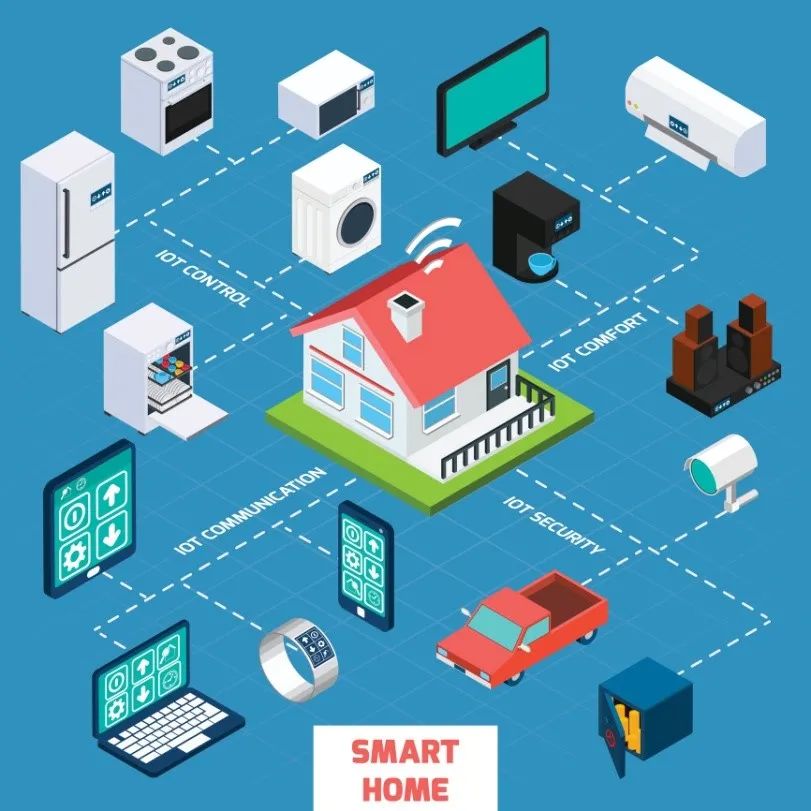Telemetry technology is a relatively old concept in the field of communication. As early as the last century, sensors had the capability to transmit signals over long distances, enabling scientists to monitor terminal machines and other activities remotely. Today, with the aid of computer processors, machines can receive data from sensors and other machines and perform relevant operations, thus achieving communication between machines (M2M). The widespread use of the Internet has led to a surge in data and information communication, driving the formulation of standard protocols.
The Internet of Things (IoT) has different meanings based on its application. It can be divided into two areas in business and industry: Industrial Internet of Things (IIoT) and IoT. Some key differences between the two are:
-
IoT applies to many niche markets, including consumer goods, agriculture, manufacturing, and healthcare, while IIoT primarily focuses on industrial applications, such as manufacturing and energy sectors. IoT covers a broader scope, whereas IIoT is a subset of IoT.
-
IoT emphasizes consumer groups, while IIoT tends to access as much data as possible to optimize industrial manufacturing processes and maximize supply chain efficiency.
-
While IoT can generate a large amount of data to enhance consumer experience, the scale of data in IIoT is larger and is crucial for the safety of operational processes and related personnel.
The key challenge faced by the development of IoT and IIoT is how to handle the massive amount of collected data.
What Exactly Is MQTT?
What exactly is MQTT? This was my reaction when I first encountered this interesting topic. The abbreviation stands for:
-
Message: Simply put, MQTT includes a data source that publishes topic messages to a broker, which then sends the messages to all devices or terminals subscribed to that topic.
-
Queue (or queuing): Despite the inclusion of the word “queue” in its name, MQTT is not a queue-based protocol, and this aspect has evidently not been utilized throughout the protocol’s updates.
-
Telemetry: The key to IoT and IIoT; the transmission of data is at the core of telemetry technology.
-
Transport: Point-to-point data transmission is facilitated through a central hub or broker.
MQTT is a simple hub-and-spoke system: communication between sensors, applications, and devices is achieved through data center services run by a central broker. Devices do not attempt to communicate directly with each other, as all data must pass through the central broker. From a processing demand perspective, MQTT is lightweight, making it suitable for various applications in bandwidth and latency-constrained network environments (such as typical manufacturing sites). MQTT sessions are simple and fast: connection, authentication, communication, and termination. As data volume increases, the simplicity and lightweight nature of the MQTT protocol make it highly scalable, making it an ideal choice for large remote network systems involving many sensors (such as transmission line systems, long-distance pipelines, and oil wells).
A Wealth of Application Examples
In addition to being able to monitor long-distance oil pipelines and other energy transmission scenarios, the low-bandwidth characteristics of MQTT make it applicable to many other applications. Home automation applications, including heating, ventilation, and air conditioning (HVAC), lighting, smart devices, and security, all utilize the MQTT protocol (see Figure 1). Home gardening can also be high-tech, where users subscribe to messages from light, temperature, and humidity sensors to obtain real-time data from the field and then automatically adjust watering schedules remotely based on that data. Enthusiasts even use the MQTT protocol with Arduino or Raspberry Pi to control Christmas lights. Medical monitoring, transportation network monitoring, asset tracking, environmental status checks, climate data logging, and automated kiosk monitoring are all examples of MQTT protocol usage.

Figure 1: One application of the MQTT protocol is home automation.
Conclusion
Timely and accurate information is very useful for enhancing the performance of consumer IoT and Industrial Internet of Things (IIoT) systems. As more and more data becomes available for interpretation and use, establishing protocols and methods for information sharing is essential. In the field of M2M communication, MQTT will become the most important protocol, enhancing system scalability while minimizing latency in long-distance transmission, with low bandwidth usage and minimal impact from transmission interruptions.

#Recommended Reading#
Investigation of Radiation Exceeding Standards in a Quadrotor Arm ProductSimple Introduction to CAN BusWhat is Automotive Lidar and How Does It Work?What is PID? Let Me Tell You a StoryLinear Algebra in the Eyes of Programming ExpertsWhy ++i is More Efficient Than i++Common Communication Protocols in Embedded Systems and IoTIllustrated Explanation of Modbus Communication ProtocolPLC Programming Examples (30 Cases)
 Click to read the original article and download the “Chinese Version of MQTT Protocol” materials.
Click to read the original article and download the “Chinese Version of MQTT Protocol” materials.